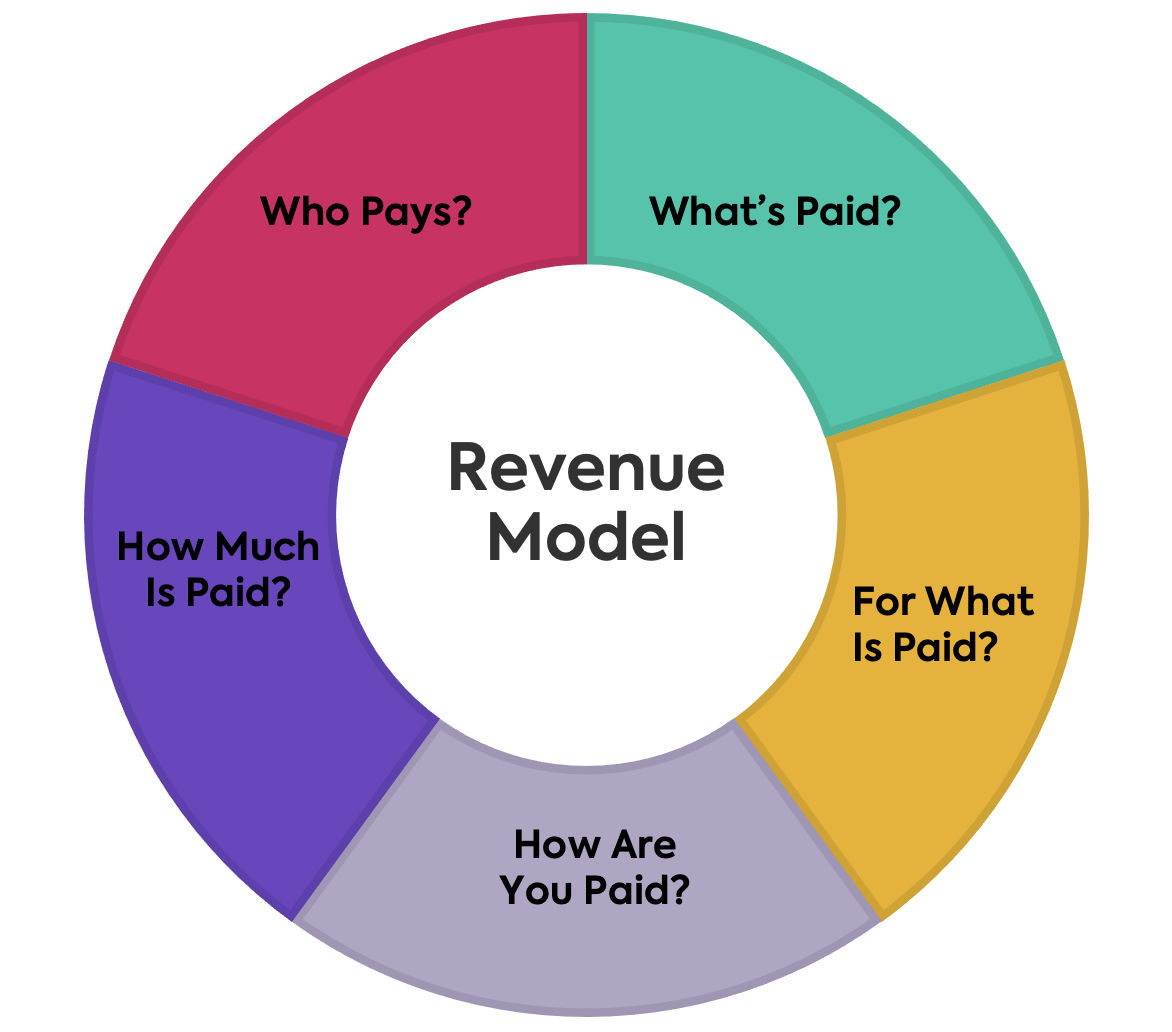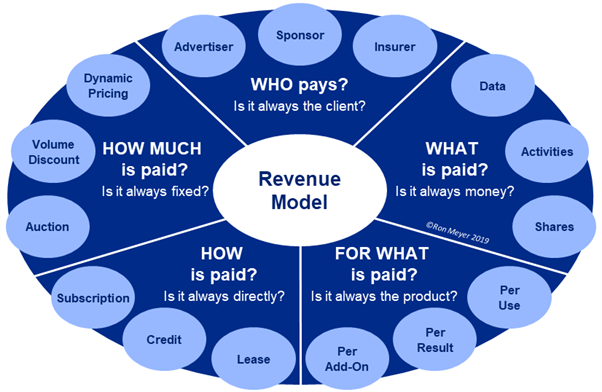Behance is an online platform dedicated to showcasing and discovering creative work. Since its inception in 2005, it has become a vibrant community for artists, designers, photographers, and other creative professionals to display their projects and connect with others in the industry. The platform allows users to create visually appealing portfolios, making it easier for them to attract potential employers or clients.
But Behance is more than just a portfolio site; it's a hub for inspiration. It features a wide array of creative fields, from graphic design and fashion to architecture and illustration. Users can follow each other, appreciate artworks, and leave comments, fostering an environment of collaboration and feedback. By aggregating works from various sectors, Behance cultivates a rich network that aids in the professional growth of its users and promotes the diversity of creative expression.
Understanding the Revenue Streams of Behance

Behance has crafted a robust business model that generates revenue through various channels. The main sources of income include:
- Subscription Services: Behance offers a premium service called Adobe Creative Cloud. This subscription provides users with additional features such as unlimited storage for their portfolios, advanced insights into viewer statistics, and unique customization options. This service is particularly attractive for professionals looking to boost their visibility and credibility.
- Job Listings: The platform serves as a job board where creative professionals can find jobs tailored to their skills. Companies pay to post job listings, and in turn, users can discover numerous opportunities in one convenient location. It's a win-win situation, fostering both employment and talent acquisition.
- Advertising Revenue: Behance also generates income through strategic partnerships and advertisement placements. Brands can target creatives in a specific niche, and this focused marketing bears better results for advertisers while ensuring relevant content for users.
- Featured Projects and Collections: Some projects receive special features or placement, which can sometimes involve a fee. These features increase exposure for designers and provide revenue for Behance.
- Collaborations with Adobe: As a subsidiary of Adobe, Behance benefits from collaborations with the company, allowing for bundled services that enhance user experience and simultaneously drive revenue.
This diverse range of revenue streams illustrates Behance's strategic approach to monetization, making it not only a favorite among creatives but also a sustainable business model in the long term. By combining community engagement with professional services, Behance continues to thrive in a competitive landscape.
Also Read This: Mastering Image Tracing in Illustrator with the Pen Tool
3. Subscription Services and Membership Fees

Behance has a well-structured subscription model that offers various features designed to cater to creative professionals. At the core of its revenue generation strategy are its subscription services and membership fees, which provide users with enhanced tools and visibility to showcase their work.
One of the standout offerings is the Behance ProSite, which allows users to create a custom portfolio website. This feature is especially appealing for freelancers and creatives looking to establish an online presence without the complexities of web development. The subscription fee for ProSite not only grants access to a personalized domain but also integrates seamlessly with Behance’s platform, making it easy to showcase project work.
Additionally, Behance provides a Creative Cloud membership that amplifies its offerings. By linking with Adobe Creative Cloud, users gain access to tools that help in presenting their creative work effectively. This integration creates a win-win situation for both Behance and its members, as it encourages users to enroll in the Adobe ecosystem, while Behance benefits from consistent subscription revenue.
To sum it up, Behance’s subscription services generate a reliable revenue stream while offering undeniable value to its users. Here’s a quick overview of the primary subscription offerings:
- ProSite: Custom portfolio website with personalized domain.
- Creative Cloud Membership: Access to Adobe tools for enhanced project presentation.
- Increased Visibility: Improved visibility for portfolios to attract potential clients and collaborators.
Ultimately, these subscription fees not only contribute to Behance's bottom line but also enhance the ecosystem for creatives, encouraging more professionals to join and engage with the platform.
Also Read This: How to Invert an Image on Google Slides
4. Advertising Revenue and Brand Partnerships
Advertising revenue and brand partnerships play a pivotal role in Behance’s business model. Given its substantial audience of creative professionals, Behance provides a unique platform for brands looking to reach a targeted demographic. Let’s explore how this aspect of their strategy works.
Behance collaborates with various brands looking to promote their products or services through targeted advertising. The platform offers options that allow brands to showcase their offerings directly to creatives who are often decision-makers in their industries. This can range from software tools, art supplies, and even recruiting services tailored for creatives.
Moreover, brand partnerships amplify Behance’s revenue potential. By collaborating with prominent companies like Adobe, Behance can create co-branded campaigns that resonate with its user base. These partnerships often result in sponsored content, contests, and challenges that engage the community while simultaneously serving the interests of the brands involved.
Let’s break down the key aspects of advertising revenue and brand partnerships:
- Targeted Advertising: Brands can create tailored ads displayed to specific user segments, ensuring better engagement rates.
- Sponsored Campaigns: Collaborations with brands to run contests or features that benefit both the platform and the partner.
- Enhanced Brand Exposure: Using a creative-centric platform allows brands to access a niche audience effectively.
Overall, Behance’s reliance on advertising revenue and brand partnerships not only diversifies its income sources but also enriches the user experience by connecting creatives with relevant industry trends and products, creating an ecosystem where everyone benefits.
Also Read This: How to Successfully Promote Your Work on Behance for Increased Views and Engagement
Marketplace for Creative Talent
Behance has evolved into a vibrant marketplace for creative talent, offering a platform where artists and designers can showcase their work and connect with potential employers and clients. This unique positioning not only benefits creatives but also serves as a key revenue stream for Behance itself. Let's dive into how this marketplace operates and generates income.
One of the main features of Behance is its job board, where businesses can post job listings targeting creative professionals. Companies are willing to pay a premium to access a pool of talented individuals who have already demonstrated their skills through their portfolios. This creates a win-win situation: employers find the right talent, while artists potentially land their dream jobs.
Additionally, Behance offers premium memberships for creatives. This subscription model provides members with enhanced visibility, allowing them to showcase their work more prominently. In return, they gain access to valuable insights and analytics about their projects that could help refine their portfolios over time.
Furthermore, Behance facilitates the sale of creative assets through its integrative features. This allows designers to sell their designs, templates, and other digital assets directly to consumers and businesses. The revenue generated from these transactions contributes to Behance’s overall financial health.
In summary, the marketplace for creative talent is a cornerstone of Behance's business model, focusing not only on showcasing creativity but also on monetizing the vast network of talents and opportunities present on the platform. By bridging the gap between creatives and employers, Behance creates an ecosystem that is beneficial for all stakeholders involved.
Also Read This: how to reduce image kb size
Impact of Adobe Acquisition on Behance's Revenue Model
In 2012, Adobe made a significant move by acquiring Behance, and the impact of this acquisition on Behance's revenue model has been substantial. Initially, many were curious about how this change would alter the platform's approach to business and revenue generation.
First off, the integration into Adobe's ecosystem has opened up a plethora of opportunities for growth. With access to Adobe’s extensive client base, Behance has been able to attract more businesses looking for creative talent, ultimately increasing the demand for job listings on its platform. This integration has strengthened its job board revenue by offering businesses an easy pathway to connect with talented creatives who use Adobe products.
Moreover, Adobe has leveraged Behance to strengthen its Creative Cloud subscription model. By promoting Behance as an essential tool for creators, Adobe encourages its subscribers to showcase their work, effectively driving traffic and engagement on the platform.
The acquisition also allowed Behance to implement features that are more aligned with Adobe’s offerings. For instance, the introduction of project collaborations and sharing tools helps artists and clients work together seamlessly, which in turn can justify premium membership fees.
Lastly, being part of Adobe has enabled Behance to scale its marketing efforts significantly. The resources available help in reaching a larger audience, increasing user engagement, and, ultimately, driving revenue.
In conclusion, the Adobe acquisition has undeniably reshaped Behance’s revenue model, enhancing collaboration opportunities, increasing job board activity, and fortifying its presence within the creative industry. This symbiotic relationship not only benefits Behance but enriches the overall creative community as well.
Also Read This: How to Promote Your Behance Project and Gain More Exposure
Future Trends and Predictions for Behance's Monetization
As we look to the future, the landscape of digital platforms like Behance is ever-changing. There are several trends on the horizon that could significantly impact its monetization strategies. Here are a few predictions:
- Increased Integration of AI Tools: As artificial intelligence continues to advance, Behance may integrate AI tools to help creatives streamline their processes. This could include automated portfolio generation or AI-powered project recommendations, possibly leading to subscription-based monetization.
- Enhanced Collaboration Features: The rise of remote work has fueled a demand for effective collaboration tools. Behance could capitalize on this by developing premium services that facilitate real-time collaboration among creatives, making it more tempting for teams to subscribe.
- Galleries and Curated Experiences: Expect to see Behance investing in curated spaces that highlight top work or emerging talent. Offering premium placements within these galleries could serve as an additional revenue stream, attracting both freelancers and agencies.
- Upgraded Education Platforms: As more creatives seek to enhance their skills, Behance could offer paid workshops or tutorial series hosted by industry leaders. This not only adds value to the community but also builds a potential revenue model.
- Subscription Models for Brands: Behance might introduce tailored subscription plans for businesses seeking to access top-tier talent or specific niches within the creative community, thus making it attractive for brands looking to enhance their outreach.
As these trends evolve, Behance must stay agile, ready to adapt its business model to align with the changing needs of the creative community and market dynamics.
Conclusion: The Sustainability of Behance's Revenue Model
In conclusion, Behance has carved a niche in the creative world that positions it uniquely within the competitive landscape of platforms like Dribbble or ArtStation. Its revenue model, largely dependent on premium features, partnerships, and the strength of Adobe's infrastructure, shows substantial promise for sustainability.
Here are some key factors contributing to the strength of Behance's revenue model:
| Factor | Description |
|---|---|
| Community Engagement | Behance fosters a vibrant community of creatives, encouraging networking and collaboration, which can enhance user loyalty and, consequently, financial support. |
| Integration with Adobe Products | Being part of the Adobe ecosystem provides users with seamless access to tools they already use, making it a desirable platform. |
| Diverse Monetization Streams | With potential revenue from subscriptions, advertising, and partnerships, Behance ensures that its financial health isn't reliant on a single source. |
Overall, as Behance continues to innovate and adapt to the evolving creative landscape, it stands to maintain its position as a valuable resource for artists and a sustainable revenue model for itself. The key will be balancing user needs with profitability in a way that fosters growth without sacrificing community integrity.
 admin
admin








